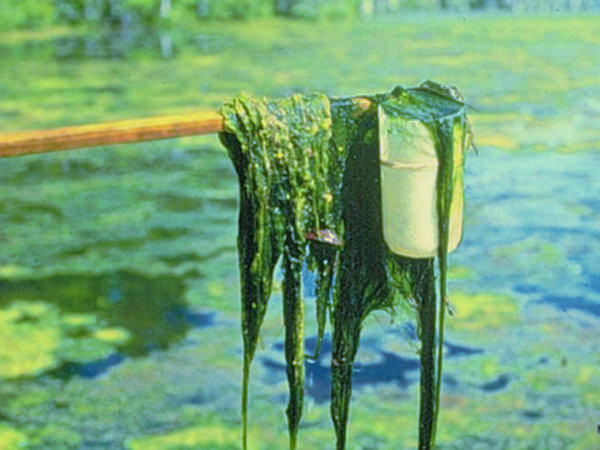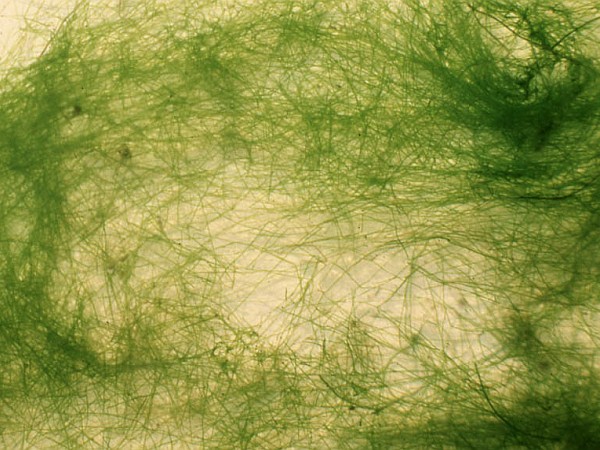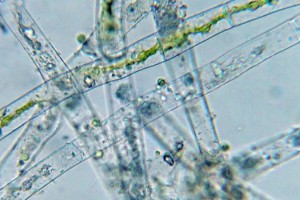Removing thread algae in the pond without chemicals
Thread algae, also called wire algae, have long threads and grow optimally in the pond under the following conditions:
» a lot of sun & warm temperatures (depending on the weather, standing shallow water)
» a lot of nutrients in the water (lawn fertilizer, fish food, ground water)
Rain with lawn fertilizer is often washed into the pond by a heavy thunderstorm. High levels of nutrients from groundwater or fish food can also be the cause of thread algae, to the great annoyance of pond owners.
Already when creating a new pond or building a garden pond, many factors can be taken into account to prevent algae formation.

Thread algae in the pond with long algae strings
Remove thread algae
There are several ways to remove thread algae from the pond without chemicals:
» Manually mounted with the thread algae brush on a telescopic rod, the algae tufts, thread algae can be rolled up. In this way, annoying thread algae are removed from the pond, while at the same time unwanted nutrients are extracted from the pond. Like a comb, the thread algae brush combs the thread algae, wire algae. Afterwards, simply wipe the brush off and put it in a bucket of water, so that small pond inhabitants that live in the thread algae can be brought back into the pond.

The Spirogyra algae, also known as screw algae, is a green alga and has filamentous threads. The Spirogyra often occurs in spring in calm waters and likes to be stuck to stones or floating in the water.
Thread algae are a nuisance for pond owners, they clog pumps and filters and also do not look nice. In contrast to many other algae, thread algae are difficult to remove.
The thread algae, or all algae in general, are perfectly suited as fertiliser in the garden bed or in the compost. It is best to mix them with some soil so that the nutrients from the algae are absorbed into the soil.
» Chemically with biocides, thread algae stop or so-called natural algicides destroy vital microorganisms in the pond. Bacteria and fungi are useful helpers and help to keep the biological balance stable. Algicides are chemicals and often contain copper, copper sulphate, copper chelates, sodium carbonate or hydrogen peroxide.
» Simple household remedies to remove thread algae are e.g. create shade to avoid direct sunlight. Aquatic plants absorb the nutrients and are very effective against algae and give the pond stability. You will find more household remedies as little helpers here.
» Removing thread algae with natural clicks under water is an effective way to stop thread algae growth. The acoustic click signals are sent under water, the resonance vibrations damage the cell wall of the thread algae and the algae die naturally. Cladophora Alge nach 8 WochenThe empty cell walls (Cladophora algae on the left in the picture) sink to the bottom and are decomposed by the microorganisms, bacteria, over time.

The biofilm, also perceived as a slimy algae layer is very important for the pond. In the biofilm, vital microorganisms such as bacteria, fungi and protozoa are stored.
Nature itself produces similar sounds, e.g. when water hits a pond surface or in the animal kingdom: martens, bats, dolphins. Aquatic plants thrive better because the algae cannot absorb the nutrients in advance.
During pond cleaning, thread algae are removed and nutrients are extracted from the pond. It is important that the water is filtered and returned to the pond so that no new nutrients are brought into the pond through the refill water.
» You will find everything about pond cleaning with many tips here.

